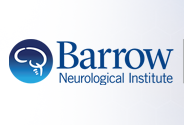Ischemic stroke in a young adult with a known epileptogenic arteriovenous malformation: illustrative case.
Document Type
Article
Abstract
BACKGROUND: Brain arteriovenous malformations (AVMs) usually manifest as hemorrhages or seizures. They rarely present with ischemic symptoms, especially in young patients. We present a case of an epileptogenic AVM that led to cerebral infarction due to paradoxical embolic occlusion of the middle cerebral artery (MCA) involving the main feeder of the lesion.
OBSERVATIONS: A 35-year-old male had been suffering from AVM-associated epilepsy for 10 years and was scheduled for surgery. He suddenly developed right-sided hemiconvulsions followed by hemiparalysis and impaired consciousness. Computed tomography revealed no intracerebral hemorrhage, and symptoms were initially thought to indicate epilepsy and Todd's palsy. Because of his prolonged symptoms, he underwent magnetic resonance imaging, which revealed a large cerebral infarction due to occlusion of the MCA involving the main feeder of the AVM. The patient underwent AVM resection, and the partially thrombosed nidus was completely removed. Histopathological investigation revealed a fresh thrombus in totally occluded nonarteriosclerotic feeders. He had no atrial fibrillation; however, subsequent transesophageal echocardiography revealed a patent foramen ovale, suggesting a paradoxical embolism.
LESSONS: This case serves as a reminder that AVMs can present with considerable variability. Acute cerebral infarction should be considered a possible mechanism of seizures, even in patients with epileptogenic AVM.
Publication Date
9-25-2023
Publication Title
J Neurosurg Case Lessons
ISSN
2694-1902
Volume
6
Issue
13
PubMed ID
37773764
Digital Object Identifier (DOI)
10.3171/CASE23432
Recommended Citation
Kuribara, Seiji; Maeda, Takuma; Yanagawa, Taro; Tsukagoshi, Eisuke; Kohyama, Shinya; and Kurita, Hiroki, "Ischemic stroke in a young adult with a known epileptogenic arteriovenous malformation: illustrative case." (2023). Translational Neuroscience. 2414.
https://scholar.barrowneuro.org/neurobiology/2414


